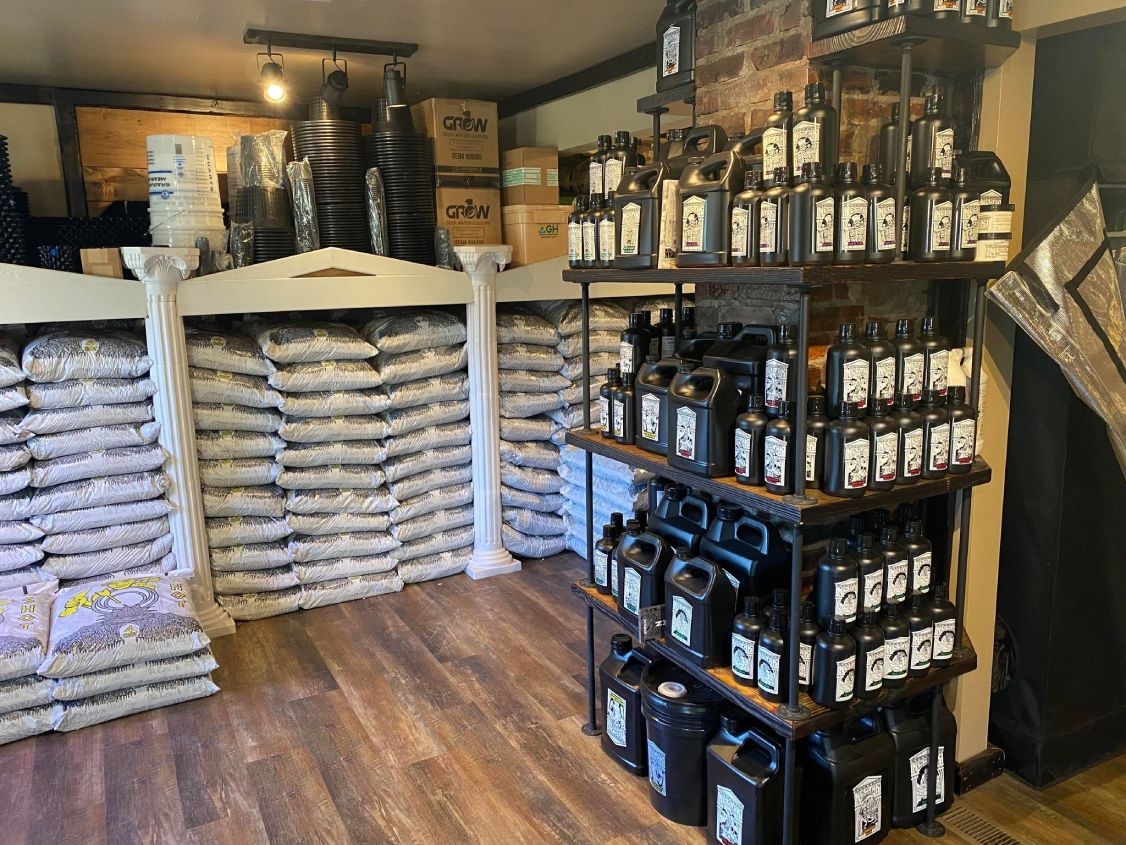The Indoor Earthworm Process: Your Key to Flourishing Plants With Planting
The Indoor Earthworm Process: Your Key to Flourishing Plants With Planting
Blog Article
Study the World of Hydroponics: Discovering Numerous Types
Within the world of hydroponics exists a varied variety of growing techniques that supply one-of-a-kind advantages for expanding plants without soil. As we embark on this expedition of different hydroponic systems, we will certainly uncover the complexities of techniques like the Nutrient Movie Technique (NFT), Deep Water Society (DWC), Wick System, Ebb and Flow (Flooding and Drain), and Aeroponics. Each approach presents a distinctive method to nurturing plants in a soil-less environment, promising advancement and efficiency in the world of modern agriculture.

The Nutrient Movie Strategy (NFT)
The Nutrient Movie Method (NFT) is a hydroponic system that includes a constant flow of nutrient solution over plant roots in a slim movie to promote efficient nutrient uptake. This method makes use of a superficial stream of water which contains dissolved nutrients, permitting the plant origins to have continuous access to the necessary components for development - The Indoor Earthworm. The nutrient service flows along the base of the channel, getting in touch with the origins and afterwards draining away, providing a very oxygenated atmosphere vital for origin health and wellness
Given that the nutrient service is recirculated, it calls for much less water compared to standard soil-based horticulture. Additionally, the regulated setting of the NFT system lessens the threat of nutrient imbalances and illness, leading to much healthier plants.
Deep Water Culture (DWC)
In a DWC system, plants are positioned in internet pots, allowing their roots to dangle directly into a nutrient service. The secret to success in DWC is preserving the appropriate oxygen levels in the nutrient service to avoid root rot and advertise healthy and balanced plant development.
Among the main benefits of DWC is its low maintenance requirements. With fewer moving components and no demand for a complicated watering routine, DWC is a beginner-friendly alternative for those brand-new to hydroponic horticulture. In addition, the straight access to oxygen and nutrients enables plants to uptake what they need more efficiently, typically resulting in faster growth prices and greater returns compared to standard dirt farming techniques. Regulating water temperature and avoiding algae development in the nutrient option are important considerations when implementing a DWC system.
Wick System
In hydroponic farming, the Wick System is a passive approach that allows plants to draw up nutrient service via capillary activity. The capillary action of the wick permits the nutrient solution to move from the reservoir to the growing tray, guaranteeing a continuous supply of nutrients to the plants' roots. It may not be appropriate for larger plants or those with high nutrient requirements, as the passive nature of the system can lead to uneven nutrient distribution.
Ebb and Flow (Flood and Drainpipe)
Discovering the Ups And Downs (Flooding and Drainpipe) system supplies insight into a dynamic hydroponic strategy that rotates in between flooding and draining the plant roots with nutrient remedy. This system operates by occasionally swamping the plant containers with a nutrient service from a storage tank and then enabling the excess service to drain back. The process is commonly managed by a timer to make sure routine flooding cycles, providing the origins with oxygen as the option recedes.
Ebb and Flow systems are versatile and can suit different plant sizes and kinds. They provide a good equilibrium of water retention and aeration, advertising healthy and balanced root growth. The regular flooding helps supply nutrients directly to the origins, improving nutrient uptake efficiency. Additionally, the ebb and circulation action avoids water stagnancy, decreasing the danger of origin rot and other water-related concerns.
This method is prominent amongst hydroponic lovers for its performance, simplicity, and versatility to various plant needs. With proper tracking and upkeep, the Ups and downs system can support durable plant development in a controlled hydroponic atmosphere.
Aeroponics
Making use of a high-pressure misting system, Aeroponics is an innovative hydroponic method that suspends plant roots in an oxygen-rich setting to advertise optimum nutrient absorption and vigorous growth. Unlike various other hydroponic strategies, which submerge roots in water or a nutrient option, Aeroponics supplies nutrients straight to the roots through a great haze. This haze is sprayed at normal periods, guaranteeing advice that the roots get a consistent supply of water, oxygen, and nutrients.

One of the key benefits of Aeroponics is its ability to make best use of nutrient uptake while lessening water usage. By providing nutrients directly to the origins, plants can absorb them more successfully, resulting in faster development rates and greater returns. Furthermore, the oxygen-rich setting created by the misting system boosts origin growth and aids stop origin conditions.
Aeroponics is especially fit for growing leafy environment-friendlies, herbs, and other plants that grow in aerated atmospheres. The Indoor Earthworm. Its reliable use resources and capability to advertise rapid growth make it a preferred choice for hydroponic enthusiasts seeking to attain optimal results
Conclusion
In conclusion, hydroponics provides a series of cutting-edge strategies for expanding plants without dirt. From the nutrient movie strategy to deep water society, each approach has its very own benefits and obstacles. By recognizing and making use of these various sorts of hydroponic systems, people can explore brand-new opportunities for sustainable agriculture and make best use of plant development in regulated atmospheres.

Report this page